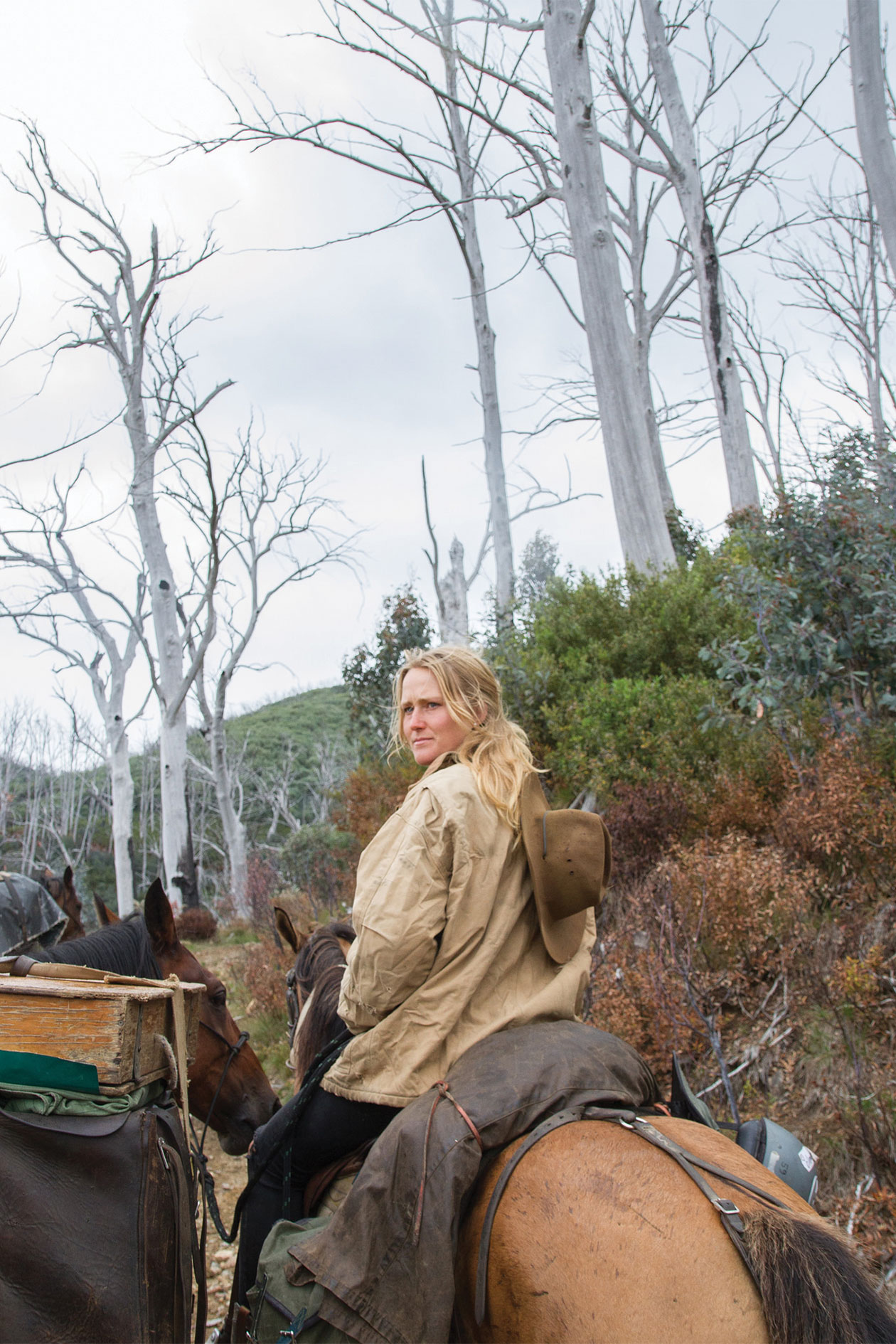Wild Tracks
Psych grad undertakes an epic Australian adventure on horseback.
3,311 miles. High mountain passes. Tropical heat. Rivers that flood in the wet season and vanish in the dry season. Wilderness as beautiful as it can be dangerous.
That’s what awaits Clemmie Wotherspoon ’13 and her three rescued horses—Whiskey, Mac, and Ari—as she sets off on an epic journey along Australia’s Bicentennial National Trail. Completing the whole route unsupported on horseback is a feat fewer than a dozen people have accomplished. It’s the kind of once-in-a-lifetime adventure many dream of—but dreaming is one thing, actually doing another. And doing, in this case, has been a staggering logistical challenge that’s taken four years of planning.
“Oh my god,” she sighs, when I ask how much preparation has gone into the trip. “So much.”
She’s packing up for the trail as we talk via WhatsApp—everything you’d need for a backpacking trip, plus an electric fence, hobbles, nose bags, vet supplies, farrier’s tools. . . All of it has been donated by sponsors, the product of what she describes as a full-time job raising money for the trek. On top of that job, she’s had to learn a huge array of new skills. Surviving in the wilderness. Navigation. First aid. Managing the horses. Shoeing the horses, which is an art unto itself. She’s had to carefully plan her timing to follow sources of water and avoid exhaustion, plan for bush fires, river crossings, crocodiles, snakes. “With horses,” she says, “if something can go wrong, it will go wrong.”
This trek isn’t just an adventure, however. It’s more like an existential wager, a cosmic bet on the power of horses to traverse a landscape that is both physical and psychological.
Clemmie was raised in Delaware by an American mom and an Aussie dad, and was always fascinated by her father’s stories about the Australian outback. At Reed, she studied psychology, focusing on behavioral neuroscience. Working with Prof. Paul Currie [psychology 2007–], she wrote her thesis on the endocannabinoid system and emotional memory. “I was studying the underpinnings of fear and anxiety—why we have an experience, it scares the hell out of us, and then every time we’re around associations with that experience, we get scared again,” she explains. She also took classes from Prof. Tim Hackenberg [psychology 2009–] on behavior and conditioning, which is the foundation for training animals, be they dogs, pigeons, or horses.
A couple of years after graduation, however, she went through a spell of depression and anxiety. She had a job waiting tables when “one of the waitresses took pity on me and took me to start training horses,” she says.
She was resistant at first—she was actually afraid of horses. “In part, because they’re intimidating,” she says. “And in part because I was projecting my own anxieties.” Confronting that fear, and learning to overcome it, changed everything. She soon grasped how psychological principles can help us understand horses, and how horses can help us understand ourselves.
“When you’re working with a horse, they’re reacting to what’s really going on deep inside your mind,” she says. Horses are sensitive to extremely subtle changes in physiology and body language—a slight change in posture, an increase in heart rate. “You can’t fake it,” she says. “When you work with them, you have to learn to monitor your emotional state. It’s like meditation, where you objectively observe your mind. It’s the same with horses—you have to objectively observe them and work with them without getting upset.”
The bond between horses and people goes back for millennia, and medical writers since Hippocrates have extolled the physical benefits of riding. But researchers are just beginning to explore the potential psychological benefits. This issue was on her mind when she chanced across a book titled Tracks by Robyn Davidson, an account of an epic 1700-mile journey across Australia with three camels. Suddenly, the jigsaw pieces fell into place.
Over the course of her trek, Clemmie will visit people she’s connected with in the horse community: trainers, equine therapists, people who run horse rescue and recovery programs. Aided by the knowledge and connections she develops on the journey, she plans to launch an equine therapy program, ideally using rescued brumbies—Australia’s version of the mustang.
Like their American analogues, brumbies are viewed by some as an iconic symbol of Australia’s history, and by others as a destructive pest. But on a continent with no native hoofed animals, the ecological damage is of greater concern, a problem compounded by the fact that horses have no natural predators in Australia. Management strategies range from fertility control to capture and adoption to lethal culling.
To mitigate the ecological impact of brumbies, Clemmie favors creating sanctuaries where the horses could attract tourism to rural economies, as well as using them in the kind of equine therapy programs that so profoundly affected her life. “They have this incredible temperament as a horse, with so much potential to help us,” she says. “Practicing horsemanship, ultimately, forces you to become a better person.”
Tags: Alumni, Climate, Sustainability, Environmental, Service, Sports & Adventures
